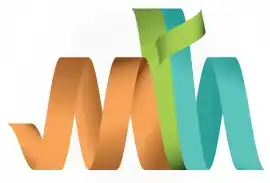IMS DB Interview Questions (1 - 10)
1. What is IMS (DB/DC)?
IMS stands for Information Management System, developed by IBM. It has two main components:
- IMS DB (Database Manager): Handles the storage, organization, and retrieval of data in a hierarchical (tree-like) structure.
- IMS DC (Data Communications), also known as IMS TM (Transaction Manager): Manages online transaction processing and communication between users and the IMS system.
2. What are the main control blocks available in IMS DB?
IMS DB uses several control blocks to define and manage database structures:
- Database Descriptor (DBD): Describes the structure of the database, including segment types, their relationships, and storage details.
- Program Specification Block (PSB): Specifies the data that an application program can access and the types of operations it can perform.
- Program Communication Block (PCB): Defines the specific database access paths available to an application program, detailing which segments can be accessed and the type of access permitted. Combines DBD + PSB for faster access.
3. What kind of databases does IMS support?
IMS supports hierarchical databases, where data is organized in a tree-like structure with parent and child segments. Data is organized in a tree-like structure (parent-child relationships).
4. What are the objectives of DBMS in IMS?
The objectives of the Database Management System (DBMS) in IMS include:
- Data Integrity: Ensuring accuracy and consistency of data.
- Data Security: Protecting data from unauthorized access.
- Data Recovery: Restoring data in case of system failures.
- Efficient Data Access: Providing quick and reliable data retrieval and updates.
5. What is DL/I?
DL/I (Data Language/I): The "language" IMS uses to interact with the database. Programs use DL/I commands to read/write data.
6. What is CBLTDLI?
CBLTDLI is the standard COBOL interface for making DL/I calls.
It allows COBOL programs to communicate with IMS databases by invoking DL/I functions to perform various data operations.
For example - CALL 'CBLTDLI' USING DLIFUNCTION, PCB, SEGMENT.
7. What are common DL/I functions?
Common DL/I functions include:
- GU (Get Unique): Retrieve a specific segment occurrence.
- GN (Get Next): Retrieve the next segment occurrence in the hierarchy.
- GNP (Get Next within Parent): Retrieve the next child segment under the current parent.
- GHU (Get Hold Unique): Retrieve a specific segment for update.
- GHN (Get Hold Next): Retrieve the next segment for update.
- ISRT (Insert): Add a new segment occurrence.
- REPL (Replace): Update an existing segment occurrence.
- DLET (Delete): Remove a segment occurrence.
8. What is a DL/I call in IMS DB?
A DL/I call is a request made by an application program to perform a specific operation on the IMS database, such as retrieving, inserting, updating, or deleting data. These calls use the DL/I interface to communicate with the database. For example - A COBOL program uses CBLTDLI to call GU and fetch data.
9. What is a segment in IMS?
A segment is a piece of data in IMS, like a row in a table. For example - In a "School" database, segments could be:
School (root)
└── Class (child segment)
└── Student (child segment) 10. What is a Root Segment?
In an IMS database, the root segment is the topmost segment in the hierarchy. The root segment serves as the entry point to access all related data within that record. Every database must have at least one root segment. For example - In a School database, the root could be SCHOOL itself, with child segments like CLASS and STUDENT.
